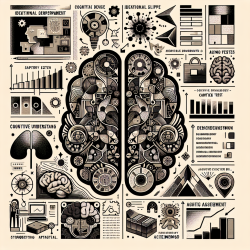The field of semantic cognition offers a wealth of insights that can significantly enhance the practice of therapists working with individuals experiencing cognitive impairments. The research article titled "Disorders of representation and control in semantic cognition: Effects of familiarity, typicality, and specificity" provides a comprehensive examination of how these factors influence semantic cognition in patients with semantic dementia (SD) and semantic aphasia (SA). By delving into the findings of this research, practitioners can gain valuable knowledge to refine their therapeutic approaches.
Understanding Semantic Cognition
Semantic cognition involves the processes that allow us to understand and categorize information based on our experiences and knowledge. The study explores how factors such as familiarity, typicality, and specificity affect individuals with SD and SA. These insights are crucial for therapists aiming to tailor their interventions to better meet the needs of their clients.
The Role of Familiarity
The research highlights that familiarity plays a significant role in semantic cognition. Patients with SD show better performance with familiar items due to their gradual degradation of conceptual knowledge. In contrast, SA patients exhibit variable sensitivity to familiarity, influenced by task-specific demands. Understanding these dynamics allows practitioners to design interventions that leverage familiar concepts to facilitate learning and comprehension.
Typicality and Its Impact
The study also examines the influence of typicality on semantic processing. Typical items are processed more efficiently by SD patients due to their shared properties with other category members. However, SA patients may experience increased competition among similar representations, affecting their performance. Therapists can use this knowledge to select therapeutic materials that align with the typicality effects observed in their clients.
Specificity in Semantic Tasks
Specificity is another critical factor explored in the research. Both SD and SA patients show impaired performance when tasks require specific classification due to representational distortion or increased control demands. By understanding these challenges, practitioners can adjust task complexity to match their clients' cognitive capabilities, promoting more effective learning experiences.
Implementing Research Insights in Practice
The findings from this research offer practical guidance for therapists aiming to enhance their therapeutic approaches:
- Select Familiar Materials: Incorporate familiar concepts into therapy sessions to support comprehension and retention.
- Leverage Typical Items: Use typical examples within categories to facilitate easier processing for clients with SD.
- Simplify Task Demands: Adjust task specificity based on individual client needs to reduce cognitive load.
The Path Forward: Encouraging Further Research
This research underscores the importance of understanding the nuances of semantic cognition in therapeutic contexts. Practitioners are encouraged to explore further studies and collaborate with researchers to continually refine their approaches. By staying informed about the latest developments in cognitive science, therapists can provide more effective support to individuals with cognitive impairments.










